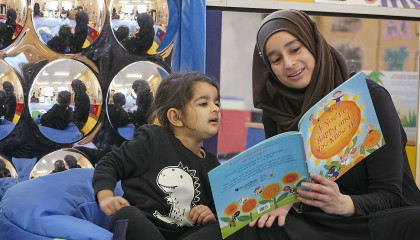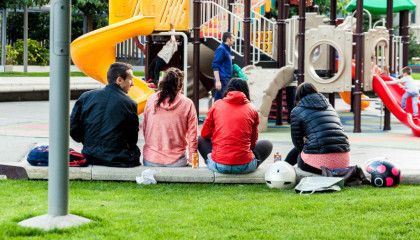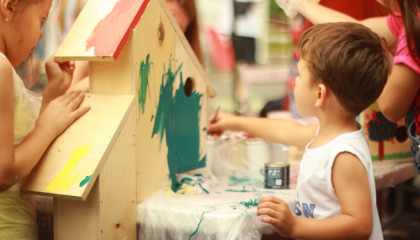You are here: Long term study following 4500 children links childcare to better outcomes
breadcrumb navigation:
- Home /
- Long term study following 4500 children links childcare to better outcomes

Long term study following 4500 children links childcare to better outcomes
Josh Cottell
25 July 2017
New findings from the ongoing Study of Childcare and Development (SEED) suggest that more frequent use of formal childcare leads to better outcomes for children.[1] The study has been following thousands of children for the last four years to provide evidence on the impact of early education, focusing on the take up of early education and childcare for two year olds.[2] Government currently offers 15 hours of free childcare for 40 per cent of two year olds who live in a low income family or are disadvantaged.
The researchers measured child development in two areas when children were three years old. Cognitive development was measured by verbal and nonverbal abilities, including the ability to name objects and to tell the similarity between pictures. Socioemotional development was measured by how well children interact with others, such as sharing toys and showing empathy, and how well they are able to regulate their own behaviour and emotions.
The researchers saw beneficial outcomes for children associated with higher amounts of childcare for both advantaged and disadvantaged children. This suggests that regardless of a child’s household income, childcare benefits their development. However, the researchers highlight that childcare may be of particular importance to the most disadvantaged children because by the time they start in childcare they are already lagging behind in some areas of development. This problem is compounded by the fact that disadvantaged children are less likely to take up free childcare than their more advantaged peers.
The researchers outlined three types of childcare: that provided at day nurseries or play groups, childcare provided by childminders, and informal childcare provided by friends or relatives. The researchers found that higher amounts of all three types of childcare were associated with positive benefits to development. However, the extent and mix of benefits were different depending on the type of childcare, and there were some slight drawbacks found for some childcare:
The ability to name different objects such as a chair or a shoe, was found to improve with higher levels of childcare in a childminder setting or informal childcare such as that provided by friends. The same association was not found with childcare in a nursery or playgroup setting. The more hours of childcare in a nursery or childminder setting children received per week, the less common it would be for children to be worried or unhappy. Children were also more likely to share toys and show empathy for others the more hours per week they received of childcare in a nursery or similar setting. Children who received more than 35 hours per week of childcare in nursery or childminder settings were more likely to lose their temper and act aggressively. In childminder settings, such children were less able to regulate their emotions and remain calm.
These children who experienced these negative effects made up only a small minority in this sample, representing only 3 per cent of the 4,583 children studied. Additionally, they were five times more likely to have started receiving childcare in their first year than children who received 35 hours or less.
The home environment was found to play a role in child development too. Factors such as the closeness between parents and children had a positive impact on both cognitive and socioemotional development, suggesting that improving the home environment is important for improving child development.
While both the amount of childcare received by children and differences in factors in the home environment were associated with differences in child development, they were found to be independent of each other. This suggests that even children who have a very rich home environment still stand to benefit from spending time in childcare.
As the children in the study get older, we will find out how the relationship between childcare and child development changes over time. For now, this report provides evidence that use of childcare provides benefits for child development at age three regardless of a family’s disadvantage level or the quality of their home learning environment. These findings bolster the case for providing enough childcare for every child that needs it.
1. Melhuish, E., Gardiner, J., and Morris, S. (2017) Study of Early Education and Development (SEED): Impact Study on Early Education Use and Child Outcomes up to Age Three, Department for Education. ↩
2. NB: In this blog, by ‘childcare’ I mean Early Childhood Education and Care (ECEC) as defined in the report. In the report, the researchers use the term ECEC to describe three categories of childcare, covering nursery classes and schools, childminders, and informal care such as that provided by friends, relatives and nannies.↩

More from our blog
Tacking barriers to access in early education
Why do some children miss out on their free place, and what can be done to increase take-up?
Spotlighting the role of Family Information Services at the NAFIS conference
Family Information Services play a vital role their local communities.
Sign up to our newsletter
Get the latest news, research and resources from Coram Family and Childcare



